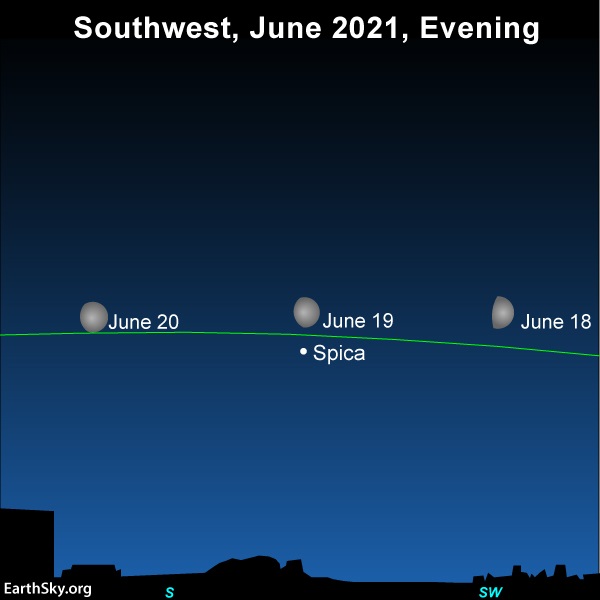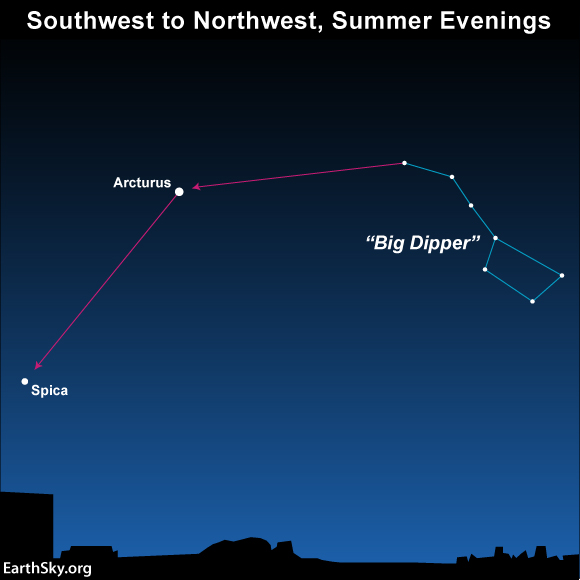
On June 18, 19 and 20, 2021 – as the setting sun closes the curtain on the day, and the darkening sky reveals a myriad of far-off suns – let the moon introduce you to a special star. The bright star close to the moon on these dates is none other than Spica, the sole 1st-magnitude star in the constellation Virgo the Maiden.
Look for the moon to snuggle up most closely with Spica on the sky’s dome as darkness falls on June 19.
First, notice the moon’s movement.
Look at our chart above, and notice that, on it, the moon appears to move from right to left. Our chart is facing southwest from a Northern Hemisphere location. If you’re in the far Southern Hemisphere, you’ll be looking in a more northerly direction for the moon and Spica, and, on a chart set for your location, the moon would be moving left to right over June 18 to 20.
Want a chart for your specific location? Try Stellarium
For all of us, the moon appears farther to the east each evening. That’s true no matter where you live on Earth. It’s true for us all because moon moves eastward in front of the backdrop stars of the zodiac. It moves eastward in our sky because it moves eastward in orbit around Earth.
The moon moves its own angular diameter of 1/2 degree eastward every hour. So it moves about 13 degrees (26 moon-diameters) eastward per day.
Now, notice Spica, a double star
From a distance of 262 light-years away, Spica appears to us on Earth to be a lone bluish-white star in a quiet region of the sky. But Spica consists of two stars and maybe more. The pair are both larger and hotter than our sun, and they’re separated by only 11 million miles (less than 18 million km), orbiting their common center of gravity in only four days. In contrast, Earth is 93.3 million miles (150 million km, or 1 astronomical unit, aka AU) from our sun, while the two stars in Spica are only .12 AU from each other.
The two stars in the Spica system are individually indistinguishable from a single point of light, even with a telescope. The dual nature of this star was revealed only by analysis of its light with a spectroscope, an instrument that splits light into its component colors.
Read more: Spica is a whirling pair of egg-shaped stars
After the moon and Spica
We’ve seen that the moon moves across our sky from night to night, due to its motion in orbit around Earth.
Some days from now, when the moon is no longer close to Spica, you might find it helpful to “star-hop,” as shown on the sky chart below:

Bottom line: Let the moon guide you to Spica on June 18, 19 and 20, 2021. After the moon’s flirtation with Spica ends, use the Big Dipper to locate Virgo’s brightest star.
EarthSky astronomy kits are perfect for beginners. Order today from the EarthSky store
Enjoying EarthSky so far? Sign up for our free daily newsletter today!











